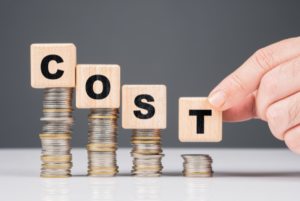I recently received another one of those “Free Steak Dinner” invitations, where some financial advisor shares his thoughts about retirement planning. Now, I know from experience that this is either an Annuity Salesman of some sort, or a Market Timer. On this particular occasion I enter and enjoy my free steak and potatoes, along with some mediocre cheesecake while I hear the story. Lo and behold, I then hear about how easy it is to time the market. “You simply monitor a set of economic indicators and that tells you when to get in and to get out. If you do this, you will beat the market with ease.” The speaker later explains how he manages to beat the S&P 500 index by an average of 3% per year. “Of course, you have to accept a bit more variance”, he explains. I smile politely as I ask my wife if she is going to finish her dessert. Once she tells me to keep my hands off of her plate, I am ready to leave.
The ”Market Timing” story (and its thousands of variants) has been told so many times, that it would be silly for me to think that I have any new response to add, so I won’t try. I can easily pull out a few of my standard responses, because they more than suffice.
First, let’s pick from “The Psychology of Money” by Morgan Housel. He lays it out as follows. Consider investing $1 in the US stock market each month from 1900 to 2019. Never sell. Reinvest the dividends. Never pick individual stocks, and pay any taxes on dividends earned from some other source. You can do all of this within a Roth IRA in the modern world if you like. Call this person Investor A.
Over that period, there have been roughly 300 months in which the country was in a recession. Let’s say that you skip those months, and save that dollar to be deployed in the first month after the recession is over. Let’s call the person that does this Investor B. Of course, this assumes that Investor B knows when recessions start and stop before they happen even though it seems safe to say that this is impossible. The end result is this. At the end of 2019, Investor A has $435,551 and Investor B has $257,386. Time in the market soundly beat timing the market.
Of course, I am sure that many will claim that their market timing strategy is much more sophisticated than that. With that in mind, let’s consider a similar tale from Andrew Hallam’s book “Millionaire Teacher.” He points out that from 1994 to 2013 US stocks averaged a compound annual return of 9.22%. However, if you missed the best 5 days you would have averaged just 7%. If you missed the best 20 days you would have averaged 3%, and if you missed the best 40 days you would have lost money. But here is the key point. Many of those 40 best days occurred during the middle of the worst periods. Some of the largest jumps were in the middle of the Financial crisis of 2007-2008. Similarly, several of the best days were during the middle of the Covid meltdown in 2020. The point is that sitting out the large blocks of hard times is less important than being invested on the rare, great days that no one sees coming. Being in the market every day beats trying to time the market unless you can see the great days coming that no one in his right mind sees until after the fact.
To be fair, let’s consider the best market timer ever imagined. Peter Mallouk lays out a story in his book “The 5 Mistakes Every Investor Makes.” In this tale, we have an investor invest $2000 a year from 1993 – 2013. Mr. Average simply invests all of the money at the start of each year (which we advocate here). Mr. Unlucky invests at the worst possible day of the year, meaning the day that generates the worst realized return over the following 365 day rolling horizon. Mr. Perfect invests on the best possible day over the same years. For the sake of comparison, we can also consider Mr. Safe, who holds his money in his checking account. After 20 years Mr. Perfect ends up with $87,004, while Mr. Unlucky ends up with $72,487. Mr. Average ends up with $81,650, and Mr. Safe ends up with $51,291.
If you take a quick glance at these ending values you will see that Mr. Average ends up with about 140% of what Mr. Safe has, and also has about 94% of what Mr. Perfect amasses. I wonder how much time and effort Mr. Perfect invested along the way to get his extra $5,351 (in comparison to Mr. Average). If it was 10 hours per month, that would end up being 120 hours per year and 2400 hours over our problem horizon. This 2400 hours of labor produced an extra $5,351. That works out to about $2.23 per hour. Mr. Perfect would have been far better off investing at the start of each year like Mr. Average, and working 10 hours a week for $15 an hour in McDonalds over the same period. If he cleared $10 an hour after taxes, that would have produced an extra $24,000. Being a bit lazy myself, I will take my $81,650 doing nothing and let Mr. Perfect keep his $87,004 and have all that glory while I go play golf.
We can go on with additional tales of imaginary skills that produce imaginary profits, but the point seems to be made. Time in the market beats timing the market, especially if you account for the effort it takes to do the impossible.



